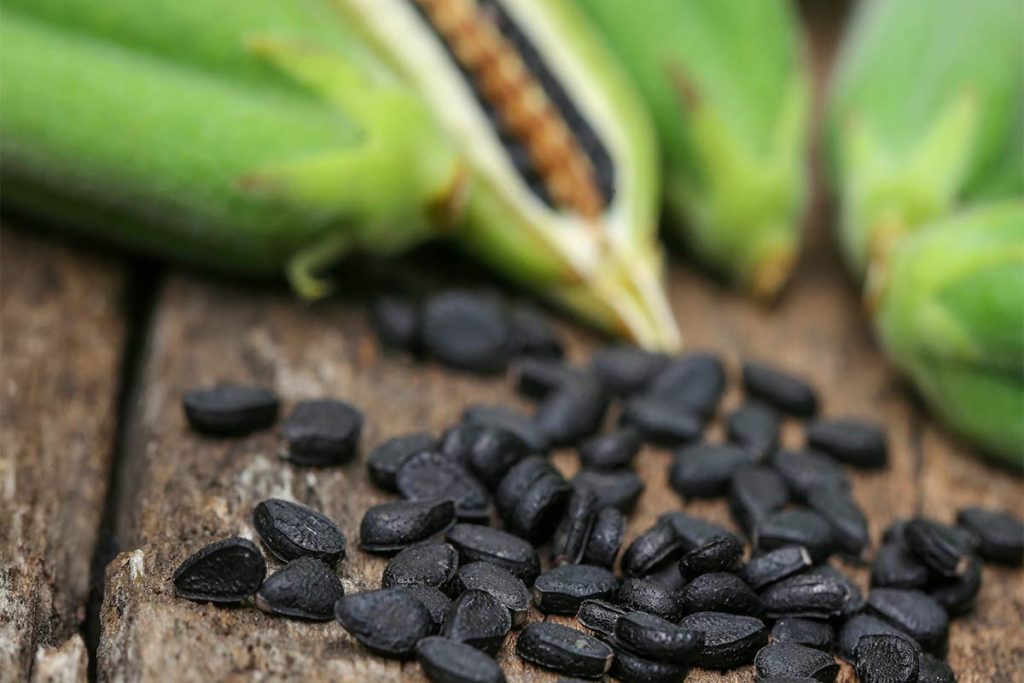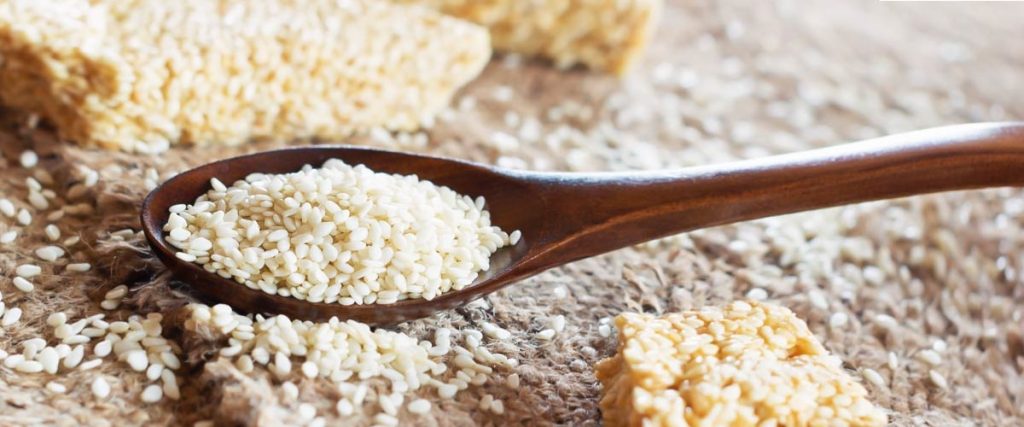Sesame known to everyone today came to us from ancient times. The name of these seeds was mentioned in many legends and stories. Now they are actively used in cooking and medicine around the world because they contain many useful substances.
In this guide, we have described in detail the components of sesame, its beneficial properties and shared the secrets of how to store and how continue the shelf life of sesame seeds.
About Sesame
In Latin, a plant whose seeds are widely used in medicine and cooking is called Sésamum Indicum. This is a one-year-old plant; the fruits resemble oblong boxes.
Due to a large amount of fat in the composition, sesame seeds are very high in calories. As a rule, the fat percentage per 100 grams is about 45%. As for calories, this figure is approximately 560 kcal.
Sesame seeds are used not only in cooking, decorating rolls and bakery products but for medicinal purposes. In medicine, sesame oil is especially valued, which is also used in cosmetology.


Homeland and History of Sesame
The history of the plant is rich and long. People living on the territory of modern Asia began to grow sesame several thousand years before our era. However, some studies indicate that the homeland of sesame is Africa.
For the first time, the name of this plant is mentioned in the ancient Egyptian medical papyrus Ebers, which contained a list of spices and herbs. In those days, sesame seeds were a universal product. For example, the inhabitants of Egypt ground seeds into flour, the Romans spread a mixture made from sesame seeds on bread, and the inhabitants of Babylon made wine and pies from these seeds. In China, they went even further: sesame was not only added to various dishes but also used to make mascara for the eyes by burning sesame oil.
Over time, the product spread to many parts of Europe. To date, 26 species of these seeds are known. One of the most popular is Indian. The largest exporters of sesame in the world are India, Egypt, Mexico, Iran and Greece.
Black and White
There are two main types of seeds: white and black sesame. Both are widely used in the preparation and decoration of various dishes in the cuisines of many countries around the world.
As we have already said both types of sesame are used in cooking. While white seeds common everywhere, black seeds are more popular in Southeast Asian cuisine and in China. Thanks to the spread of Chinese and Japanese cuisine, black sesame seeds have become known worldwide.
Sesame Compounds
Sesame is a storehouse of vitamins, minerals and other useful substances. Each seed contains sodium, zinc, manganese, phosphorus, iron, magnesium and other substances our body needs. The seeds are also rich in vitamins A, B and E, lecithin, phytosterols and sesamin, which have antioxidant properties.
If a person regularly uses sesame oil instead of vegetable or olive oil, then they are guaranteed to provide their body with all the essential micronutrients. It improves overall health.
| Compounds | Per 100 g |
|---|---|
| Fats | 61.21 g |
| Proteins | 20.45 g |
| Carbohydrates | 11.73 g |
| Water | 3.75 g |
| Vitamins | Per 100 g |
| Vitamin A | 0.3% |
| Beta carotene | 0.8% |
| Vitamin E | 11.5% |
| Vitamin B1 | 58.3% |
| Vitamin B2 | 6.9% |
| Vitamin B3 | 36.3% |
| Vitamin B4 | 5.1% |
| Vitamin B5 | 5.8% |
| Vitamin B6 | 30.8% |
| Vitamin B9 | 28.8% |
| Minerals | Per 100 g |
|---|---|
| Calcium | 6.0% |
| Iron | 63.6% |
| Magnesium | 86.3% |
| Phosphorus | 95.3% |
| Potassium | 7.9% |
| Sodium | 3.6% |
| Zinc | 61.2% |
| Copper | 155.6% |
| Manganese | 62.6% |
Beneficial Properties
Due to the rich composition, the list of useful properties of sesame seeds is simply endless.
How to Eat Sesame Properly
To obtain maximum usefulness, it is better not to heat sesame seeds, as they lose useful substances. It is also recommended not to exceed the daily allowance, as the seeds are very high in calories. The daily norm is approximately 1.5 tablespoons. It is not recommended to consume sesame oil on an empty stomach.
When Eating Seeds is Dangerous
Despite their undeniable usefulness, sesame seeds can also have a negative impact. These seeds can do more harm than good to people who suffer from varicose veins and have problems with blood vessels. This is because some substances in the product’s composition cause an increase in blood clotting.
As well, some people may be allergic to sesame oil. Therefore, before using them for food on an ongoing basis, it is recommended to do a test.
How to Choose Good Sesame Seeds
To choose a quality and good product, you should make sure that:
- Seeds are dry and crumbly. This is one of the most important conditions.
- Give preference to transparent packaging.
- If you can taste the seeds, make sure they are not bitter.

Shelf Life of Sesame Seeds: How to Store Seeds
It is better to store sesame seeds unpeeled. So, you can extend the shelf life of sesame seeds while retaining all the useful substances and properties. Unpeeled seeds can be stored in a dark, cool and dry place in an ordinary airtight container or package. As a result, the shelf life of peeled seeds is much less.
To prevent the seeds from spoiling and becoming bitter, it is better to store them in the refrigerator or freezer. Hermetically sealed seeds can be stored for no more than three months. In the refrigerator, this period can be six months.
Sesame Seeds Storage Highlights
In whatever form you store the seeds, the basic rules that will help extend their shelf life include:
| Peeled sesame seeds | Black sesame seeds |
|---|---|
| up to 3 months, in a sealed container at a temperature not exceeding 5 ° C | up to 3 months in a refrigerator, in a pantry or on a balcony in an airtight container at a temperature of up to 5°C |
| up to 1 year, in the freezer at a temperature of -18°C and below | up to 1 year in the freezer below -18°C |
